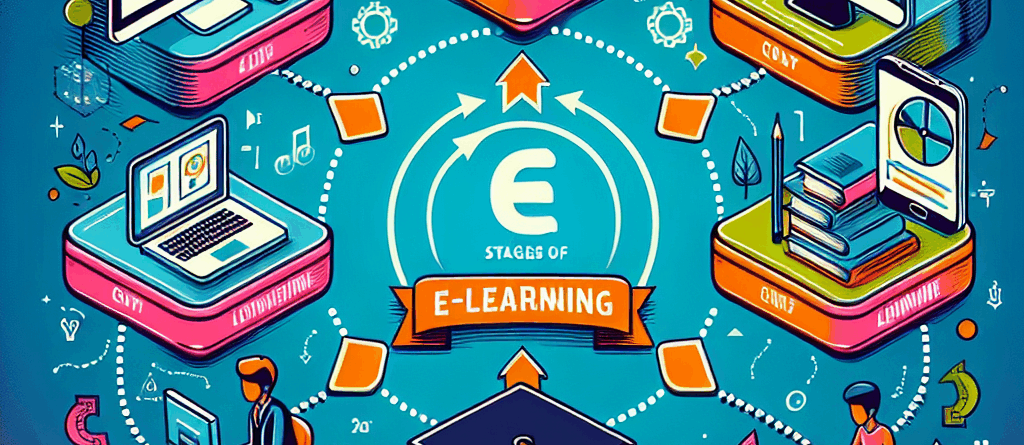What are the 4 Stages of eLearning Explained in Detail
As the world embraces digital solutions, eLearning has become an essential tool for training and education. I often get asked about the stages of eLearning and how they contribute to effective learning experiences. I find it fascinating how structured stages can make eLearning more impactful. In this post, I will explore the four stages of eLearning in detail, unraveling how they come together to create effective learning pathways.
Understanding the 4 Stages of eLearning
To appreciate the journey of eLearning, it is important to recognize its four primary stages: Analysis, Design, Development, and Implementation. Each stage plays a critical role in ensuring that learners receive a comprehensive education that meets their needs.
Analysis Stage
In this initial phase, the focus is on understanding the learner’s needs and the context in which they will be learning. This stage sets the foundation for the entire eLearning process. Here are the key components of the Analysis stage:
– Needs Assessment: Identifying what learners need to know is crucial. This involves gathering data about existing knowledge, gaps that need bridging, and overall learning outcomes.
– Demographics: Understanding the demographics of the learner group is essential. This includes age, educational background, and technological proficiency. Such information ensures that the content is relevant and engaging.
– Learning Environment: Analyzing the environment where learning will take place helps to tailor the eLearning course. Are learners in a corporate setting, a classroom, or at home? Each scenario requires a different approach.
– Resources Availability: Assessing the resources available, like budget, technology, and time, will influence how the course is designed. Understanding these constraints can lead to more realistic and achievable learning goals.
Statistics show that organizations with a solid analysis process are 60% more likely to implement successful training programs. This underlines the importance of investing time and effort into the Analysis stage of eLearning.
Design Stage
Once the analysis is complete, it is time to move to the Design stage. This phase is where creativity meets strategy. The goal here is to develop a framework that aligns with the identified needs and goals from the Analysis stage. Consider the following aspects:
– Learning Objectives: Clear and measurable learning objectives must be outlined. These goals guide the entire course structure and provide a way to measure success.
– Content Structure: Determining how to structure the content is crucial. Will it follow a linear form, include modules, or use a blended learning approach?
– Assessment Strategy: Designing relevant assessments ensures learners grasp key concepts. Assessments can range from quizzes and interactive activities to practical applications of learning.
– Instructional Strategies: Within this phase, I consider various instructional methods best suited for the topic. This can include multimedia, simulations, or gamification elements to enhance engagement.
After the Design stage, you should feel confident about the course’s roadmap. Research shows that a well-structured design can boost learner satisfaction rates by over 40%. It’s about ensuring that learners will not only engage but successfully achieve their educational goals.
Development Stage
With a solid design in place, we move into the Development stage, where ideas transform into tangible content. This stage involves turning the blueprint from the Design phase into an actual learning experience. Here are the main components of the Development stage:
– Content Creation: Developing engaging content is key here. This could mean writing scripts, creating visuals, or producing videos and animations that will be used in the course.
– Technology Integration: Selecting the right tools and platforms is essential for smooth delivery. This includes Learning Management Systems (LMS) or authoring tools that align with course objectives.
– Prototype Testing: Creating a prototype or a pilot version of the course allows for feedback and adjustments before the full launch. Testing helps identify any areas needing enhancement.
– Quality Assurance: Rigorous testing outlines what works and identifies challenges. Quality assurance practices ensure that the final product meets educational standards and learner expectations.
Research indicates that high-quality content creation during the Development stage can increase retention rates by up to 75%. This stage is vital for creating a thorough and engaging eLearning program that truly resonates with learners.
Implementation Stage
The final stage is Implementation, where the eLearning course becomes accessible to the target audience. This phase requires careful planning to ensure smooth delivery. Here are the essential components of the Implementation stage:
– Launch Strategy: A well-planned launch strategy ensures that the course reaches the right audience effectively. Consider promotional efforts, communications, and timelines for rollout.
– Support Systems: Establishing a support system for learners can enhance their experience. This might involve technical support, mentorship, or forums for discussion.
– Training Facilitators: If the course requires an instructor or facilitator, training them on the content and approach is necessary. They will play a critical role in guiding learners.
– Feedback Mechanism: Implementing mechanisms for collecting feedback helps understand what is working and what needs improvement. Feedback forms, surveys, and assessments can provide valuable insights.
Interestingly, organizations that focus on a strong implementation strategy see an increase in completion rates by more than 50%. Having a clear implementation process is crucial for harnessing the maximum potential of the eLearning program.
Bringing It All Together
The beauty of the four stages of eLearning—Analysis, Design, Development, and Implementation—is that they build upon one another. Each stage influences and shapes the next, forming a cohesive process that enhances the learning experience.
In conclusion, taking the time to understand and meticulously work through each stage is vital for anyone involved in eLearning. Whether you’re creating training programs for employees, educational courses for students, or personal learning initiatives, applying this framework will lead to improved outcomes.
As we continue to evolve in this digital age, embracing and mastering the four stages of eLearning will make education accessible, engaging, and effective. Remember, the journey of creating eLearning programs is just as important as the destination, so invest your efforts wisely in each stage.












Leave a Reply